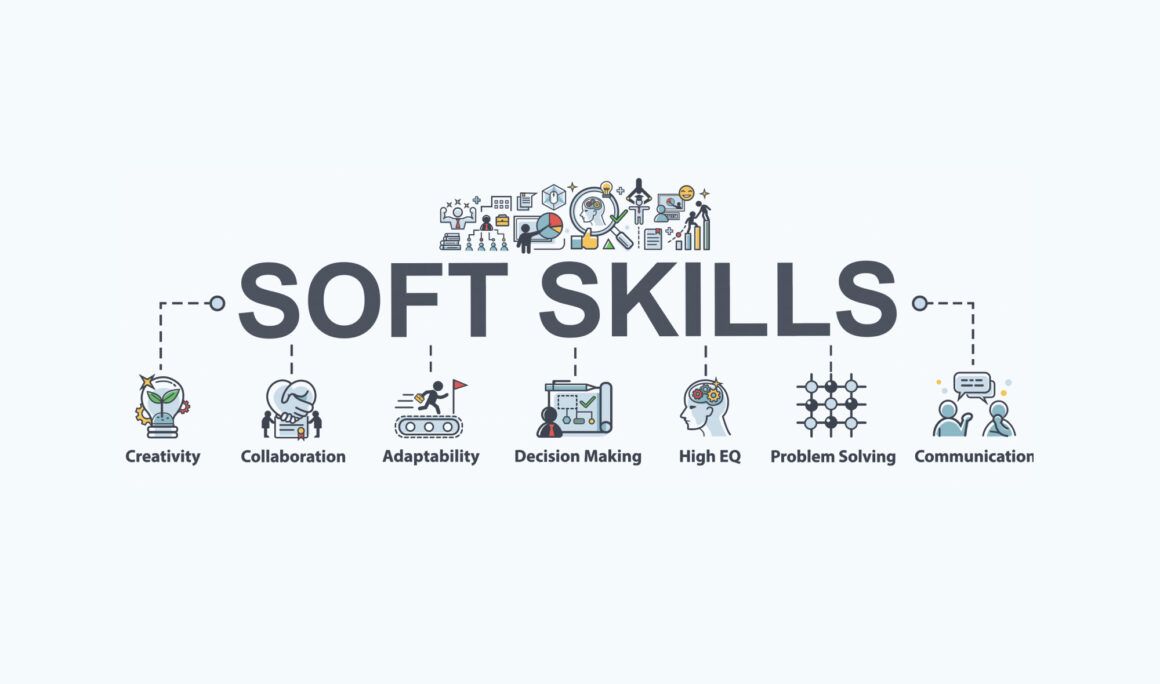
It is a well-known fact that high rates of employee turnover can be detrimental to a growing business. Not only does the company have to spend time and money training new employees, but they also lose the knowledge and experience of the previous hires who left. There are many effective strategies for decreasing and preventing employee turnover, and it starts with creating a workplace that employees want to stay in.
If you find yourself asking 'how do we decrease our turnover rate?', keep reading. In this article, we'll take a look at some of the root causes of turnover, how to calculate your turnover rate, and the 15 best strategies on how to overcome employee turnover. Employee turnover reduction is vital for business growth.
If you're looking for guidance on how to handle employee combat turnover effectively, we've got you covered. To learn how to prevent employee churn, here are some practical steps and strategies to help you navigate and manage employee turnover in your organization.
Join our Newsletter
Transform your career with our personal growth insights. Get one valuable tip right in your inbox every Saturday morning.
What is employee turnover?

Employee managing turnover refers to the number of employees who have left a company over a certain period of time. There are many different factors that can contribute to employee turnovers, such as low pay and poor working conditions.
In addition, some individuals may leave their jobs simply because they are unhappy or dissatisfied with their work situation. As a result, it is important for employers to carefully track and analyze their turnover rate so that they can make changes if necessary.
How do you calculate an employee turnover rate?
The employee turnover rate is a measure of how often employees leave an organization. It is calculated by dividing the number of employees who have left the organization in a given time period by the average number of employees employed during that time period.
This rate is generally expressed as a percentage and can help businesses identify areas where they need to focus their efforts to less employee turnover.
Join our Newsletter
Transform your career with our personal growth insights. Get one valuable tip right in your inbox every Saturday morning.
Turnover by industry

While turnover can be a costly issue for any business, it is much more difficult for certain industries. The difference is that turnover within a particular industry can cause wider problems, such as affecting the economy and local employment rates.
One of the industries that is particularly susceptible to high turnover is the retail industry. If, for example, you're aiming to reduce turnover in your grocery store, consider strategies such as offering competitive wages, investing in employee training, and creating a pleasant and respectful working environment.
With more and more people shopping online, brick-and-mortar stores are seeing a decline in foot traffic. This has resulted in a large number of store closures, leaving retailers with higher vacancy rates and increased turnover. Furthermore, with fewer consumers visiting the stores, there are fewer sales, leading to lower profits and even more staff turnover.
Another industry that is heavily affected by a higher-than-average turnover rate is the food services sector. Many employees in this industry leave their jobs due to low wages, long hours, and intense work pressure. This has a ripple effect on other workers in restaurants and cafes, as they often need to take on additional shifts or work long hours in order to keep up with demand.
While turnover can be a challenge for any industry, it is essential for business leaders to understand the factors that contribute to high rates within their sector. By identifying and addressing these issues, companies may be able to reduce employee attrition and improve the overall performance of their organization.
What causes employee turnover?

Overall, high turnover rates can be a major challenge for businesses in all industries. However, by identifying the root causes of employee turnover, companies can implement strategies to address these issues and improve their overall performance.
Read on to learn more about the top five contributing factors to high employee turnover:
1. Low pay and poor benefits
One of the main reasons that people leave their jobs is because they are unhappy with their compensation or working conditions. Team members may be tempted to seek positions at other companies focused on offering better pay and more attractive benefits, such as health insurance, retirement plans, and paid time off.
2. Unclear expectations
When an employee isn't clear about what is expected of them in their role, they can feel overwhelmed and frustrated. This often leads to higher turnover as employees feel that they don't have the support or guidance they need to be successful.
3. Poor work-life balance

Many employees today are looking for employers who can offer flexible working arrangements, allowing them to achieve a healthy work-life balance. If companies aren't able to provide this type of flexibility, team members may be more likely to seek out positions at other organizations where they have greater control over their schedules and workloads.
If you're struggling with maintaining a healthy work-life balance, you might find our article on how to find life balance in 10 simple steps helpful.
4. Lack of career advancement opportunities
When employees perceive that there are limited opportunities for growth and advancement within their current company, they may be more inclined to look for new roles elsewhere.
5. Poor management
Low morale and high employee turnover can often be traced back to ineffective or unsupportive management. This can lead employees to feel frustrated, stressed, and disempowered in their roles, which can ultimately cause them to seek out new employment opportunities.
Why employee turnover is important

Turnover can negatively impact your business in a number of ways. For starters, it can be costly, particularly if you have to replace key players in your organization. In addition, high turnover may cause greater customer churn and a decline in product quality or service levels.
And if your business relies on teams working together effectively, low employee morale due to constant departures could also lead to decreased productivity.
Tell me how to manage employee turnover.
Are you wondering how to stop high turnover? There is no one-size-fits-all answer to this question, as the best way to decrease employee turnover will vary from business to business. We have put together a list of some of the most effective strategies for reducing employee turnover in manufacturing in an organization.
Keep in mind, the best way to decrease employee turnover is not by simply implementing one or two of these measures, but rather by employing a variety of strategies that work together to create a cohesive and positive company culture.
Read on for 15 "how to reduce staff turnover" tips.
Prioritize your recruitment strategy

When it comes to reducing turnover, having a prioritized recruitment strategy is key. By targeting the most qualified candidates during the hiring process and bringing them on board quickly, your organization can reduce the amount of time and resources spent on turnover-related tasks.
Additionally, a cohesive recruitment strategy sends a message to current staff that the organization is committed to its workforce and is taking steps to ensure that it is the best it can be. This can help to reduce feelings of instability or insecurity among current employees, leading to turnover reductions overall.
Find the right talent

By bringing in new hires who are a good fit for the company and its culture, you can reduce the chances that they will leave prematurely. This not only saves you time and money spent on recruiting and training new employees but also helps to maintain a positive workplace culture.
So take the time to carefully assess candidates and hire the right employees, making sure that they are a good match for your organization.
Emphasize onboarding
There is nothing worse as a new employee than being thrown into the wind and not really knowing what is expected of you. This can lead to a great deal of stress and frustration, which can affect productivity levels and ultimately could push someone out the door.
To avoid this, it is important that companies go out of their way to emphasize the importance of the onboarding process for new team members. This may include providing them with the resources they need to quickly get up to speed, holding regular check-ins to see how they are adjusting, or creating a supportive work environment that encourages teamwork and collaboration.
By doing these things, companies can help ensure that new employees are welcomed and supported in their roles, which will ultimately help keep them engaged and motivated over the long term.
Offer competitive pay and benefits
Competitive pay and benefits are essential in any organization, but especially so when it comes to reducing employee turnover. When co-workers see that they are not being fairly compensated for their work, they are more likely to seek employment elsewhere.
In addition, providing a comprehensive benefits package helps to attract and retain top talent. By offering competitive compensation and benefits, organizations can reduce the likelihood of a great employee leaving and improve the overall morale of the workforce.
Communicate clearly

Employees who feel that they are able to communicate openly and clearly with their managers are more likely to stay at their jobs. Poor communication can lead to misunderstandings, frustration, and ultimately, increased employee turnover.
By establishing clear expectations and norms for open communication, employers can help to create a positive working environment in which employees feel comfortable communicating openly and honestly. This in turn can help to reduce the likelihood of misunderstandings and conflict and can lead to a more productive, cohesive team.
If you're looking to enhance your leadership skills, consider reading Executive Presence: The One Leadership Quality No One Told You About for valuable insights.
Set accurate expectations
If you want to reduce employee turnover, a successful business needs to set accurate expectations from the beginning. This includes understanding how to control labour turnover and how to fix high turnover rates. This means making sure that team understands their job description, what is expected of them, and what they can expect in return.
It also means communicating clearly and regularly with employees about their progress and performance. If employees feel like they are not being treated fairly or that their work is not valued, they are more likely to leave.
Look for soft skills

Soft skills are those interpersonal skills that aren't necessarily taught in a classroom, but rather are learned through experience. They include things like communication, problem-solving, and teamwork.
Many experts believe that these skills are essential for a successful career. They can help you get ahead and set yourself up for long-term success. And the best part is that they can be learned relatively easily.
If you're looking to reduce employee turnover, then make sure to recognize employees for soft skills. They can make a big difference in terms of employee happiness and retention.
Minimize bench time
Bench time is the amount of time a worker spends waiting for their next task. This wasted time can be minimized by ensuring that workers are properly scheduled and that tasks are properly distributed.
Bench time is a significant contributor to employee turnover. When workers are waiting for their next task, they are not productive and may begin to look for other opportunities. Minimizing bench time can help reduce employee turnover rates by ensuring that workers are always busy and that tasks are distributed evenly.
Foster camaraderie
Studies have shown that companies with low turnover typically have a strong sense of camaraderie among their staff members. In fact, research has found that the likelihood of leaving a job is almost three times lower when employees sense that they are part of a supportive group. This is likely due to the fact that people are more likely to be happy at work when they feel like they belong somewhere.
So if you’re looking to reduce turnover rates in your company, focus on building a sense of camaraderie among your employees. Encourage them to socialize and get to know one another outside of work, and reward employees when they do for supporting the company's values. With a little effort, you can bolster employee engagement and create a workplace where employees want to stick around for the long haul.
Encourage growth

Encouraging personal and professional growth is another great way to reduce turnover. This can help to reduce team member turnover. When employees are constantly growing and learning, they feel more engaged and connected to their work. This can help to reduce turnover rates and the likelihood that they will leave their job in search of new opportunities.
By providing opportunities for development, you are also reinforcing your company's commitment to employee growth and retention. This might mean offering opportunities for professional training, investing in mentor relationships, or simply providing constructive feedback and guidance.
By actively encouraging continued learning and career growth, you are showing employees how to build the skills and knowledge they need to succeed both on the job and throughout their career path.
Ingrain transparency
Employees are the lifeblood of any company, and one of the most important things you can do to keep them happy, engaged, and productive is to create a culture of transparency. When employees feel like they can trust their managers and their colleagues, they're more likely to feel comfortable speaking up with suggestions, asking for help, or admitting when they've made a mistake. This openness and honesty help to build strong relationships and create a sense of ownership among employees.
Transparency also breeds inclusivity, which is a key factor for healthy company culture. When employees trust one another, they're more likely to be open with information, give and receive feedback honestly, and collaborate effectively. This leads to better decision-making and a more cohesive team.
Ultimately, transparency makes companies more efficient and effective. By creating a company culture where information is freely shared and everyone is comfortable speaking up, you'll make your business run smoother and reduce turnover.
Prioritize health

One overlooked aspect of keeping employee turnover low is prioritizing the health of your team members.
One of the best ways to prioritize the health of your team is by offering well-rounded benefits packages. These can include things like paid time off, medical insurance coverage, mental health counseling, and gym memberships. Additionally, you should make it a priority to create a supportive work environment that fosters wellness and provides ample opportunities for employees to engage in healthy behaviors.
Another important way to prioritize the health of your team is by encouraging work-life balance. This can mean offering flexible scheduling, remote working opportunities, and encouraging employees to take time off when they need it. It's also important to provide access to resources that promote good physical and mental health, such as nutrition counseling, health screenings, and mindfulness and meditation programs.
Overall, prioritizing the health of your team is critical to creating a positive work culture that supports both individual and organizational success. By investing in your employees' well-being, you can help ensure that they are happy, healthy, and engaged in their work. And this, in turn, will help reduce your turnover rates, boost productivity, and improve employee performance across the board.
Offer flexible work schedules
A flexible work schedule is a work arrangement that allows employees to choose when and how they work. Job opportunities like this can include working from home, working part-time, or shifting hours to accommodate personal needs. These arrangements have been shown to improve employee productivity and satisfaction, and are becoming increasingly popular among both employers and employees.
Flexible work arrangements offer a number of benefits for both employers and employees. For employers, the main benefit is often increased productivity and flexibility. For employees, the main benefit is usually more control over their own time and better work-life balance. In addition, there are a number of other benefits that can vary depending on the specific arrangement. These include increased job satisfaction, reduced stress levels, and improved health and well-being.
As a result of these benefits, offering flexible work schedules is an excellent way to reduce employee turnover. By creating a more flexible and welcoming work environment, employers can attract and retain top talent, which is especially important in today's competitive job market.
Elicit and respond to employee feedback
Most employees are more likely to stay with a company that takes their feedback into consideration. By listening to employee complaints and suggestions, and then responding accordingly, companies can drastically improve employee retention.
This habit also encourages employees to be more communicative and forthcoming with their feedback, as they know it will be taken seriously.
Analyze turnover
Analyzing your company's turnover rate is an important step in reducing it and improving employee retention rates more broadly. There are several actions that you can take to accomplish this, including performing regular audits of your workforce, comparing it to other companies in your industry, and examining any recent changes in your company's structure or operations.
By doing so, you can identify the areas that need improvement and then make the necessary changes to employee turnover prevention departure and save money in the process.
Conclusion
High rates of voluntary turnover can be costly and disruptive for businesses. It can also lead to a loss of institutional knowledge, as well as decreased morale and productivity.
While there is no one-size-fits-all solution to reducing employee turnover, implementing some of the above-outlined strategies may be helpful for your business. Discover the benefits of a reduced turnover meaning strategy for your business. Let's explore what reduced employee turnover meaning entails and how it can positively impact your organization. Whether it's adjusting your hiring process, focusing on career development opportunities, prioritizing employee recognition, or creating a more welcoming, inclusive work environment, these changes can have a lasting impact on the entire employee experience and the success of your company.
If any of these areas of improvement resonate with you, start putting together a plan to reduce employee turnover in your organization. By addressing the issue head-on, you may be able to help retain your valuable employees and maintain happy employees and a positive work environment.

Read more about: Executive Coaching
About Julian Lewis
Julian Lewis is a driven and accomplished professional with a passion for driving positive change in the business world. He is the co-founder and COO at Zella Life.
His own experience as a professional of color in a Fortune 500 company led him to discover the limitations for advancement that many professionals like himself face. Determined to reach his full potential, Julian became an established business coach and entrepreneur, committed to supporting others in their pursuit of personal and professional growth.
Today, Julian is a recognized corporate trainer, coach, and leader, known for his ability to leverage real-life experiences and evidence-based methodologies to affect positive change within individuals and organizations. As the leader of Zella Life's coaching division, he is dedicated to empowering individuals and businesses to achieve their full potential.